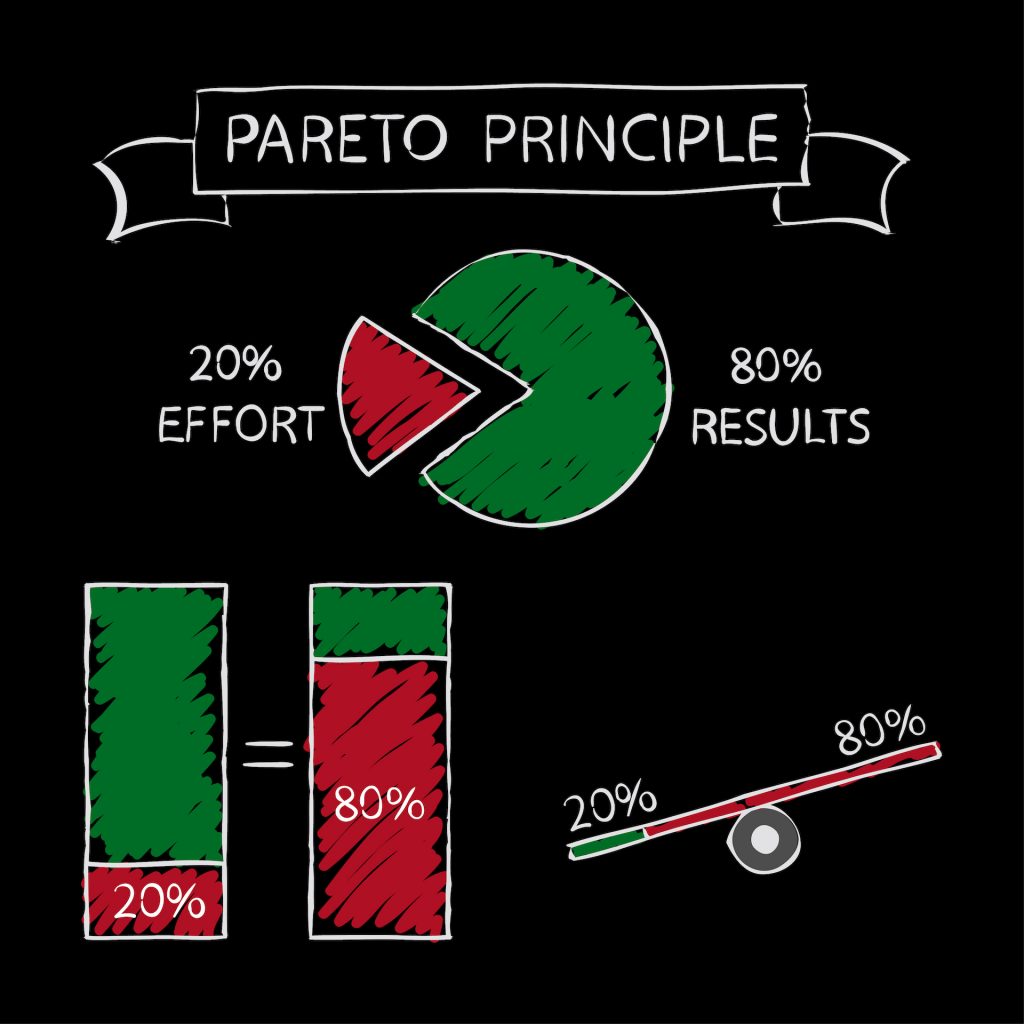Have you ever heard of the Pareto principle? If not, maybe you’ve heard of the 80/20 rule. It’s a rule that corporate executives, managers, entrepreneurs, and more look at to do more with less. The Pareto principle suggests that the majority of results come from a minority of inputs. In other words, just about 80% of results come from only 20% of your effort and time. Here, we’ll talk about applying the Pareto principle when delegating to a virtual assistant.
How the Pareto Principle Came About
The Pareto principle comes from the Italian economist, Vilfredo Pareto. In the early 1900s, Pareto observed that 20% of the population in his country controlled or owned 80% of the wealth. He assessed other countries and realized that the same principle applied there too. Pareto found that wealth was not evenly distributed and if you look around you’ll find that most things in life aren’t.
Applying the Pareto Principle in Business
Did you know IBM was one of the first companies to apply the Pareto principle? In 1963, they discovered that 80% of a computer’s time was spent executing approximately 20% of the operating code. After that, they rewrote their operating software to make the most used 20% more accessible and user friendly. This discovery made IBM computers faster and more efficient than competitors at the time, which made them an attractive buy.
Applying The Pareto Principle to Your Business
Now imagine how applying the 80/20 rule could change your business. This principle helps business owners like you realize that not all causes have the same significance. Consider the following:
- 20% of your customers generate 80% of revenue
- 20% of your employees produce 80% of the results
- 80% of your work-related output comes from only 20% of your time at work
- 80% of your company’s profits come from just 20% of the products or services you sell/offer
- And we could go on and on!
The rule of the vital few reveals that only some of our efforts lead to results. When you think of it that way, then you realize that there’s really only a few things that you, as the business owner, should be focusing on. You can delegate tasks that you personally don’t have to do to a virtual assistant, but do so strategically. Applying the Pareto principle when delegating to your virtual assistant(s) will ultimately maximize your results.
Applying The Pareto Principle When Delegating to Virtual Assistants
Before you hire a virtual assistant, you will want to assess a few things. Many people hire BEFORE making these 4 essential steps, which could later cause them to spend unnecessary money. I want you to maximize your time AND your money! So, do the following:
- Write down every single task you currently do
- Time yourself doing each of the tasks you listed
- Review each task and determine which ones can be eliminated or automated. (We can help you with our Process Audit)
- Of what’s left, decide what you can delegate to a virtual assistant
- Think of tasks you’re not good at, tasks you dislike doing, tasks that don’t need to be done by you, and activities that keep you away from revenue generation
What you have left should be the few tasks you do that actually lead to revenue generation. Remember, the majority of your results are driven by a small percentage of your efforts. You want to focus your energy on those tasks. The tasks remaining on your list should be the same activities that bring in results. If not, go through steps 1-4 again.
Sidenote: Assess the 20% of clients that bring in 80% of your revenue. Find more clients like that! If you combine this with the steps above, you’ll be one productive, money-making boss!
Make Sure Your Virtual Assistant is Productive, Too (Use 80/20 Rule)
Just like you want to focus on what you’re good at, you want your virtual assistant to focus on what they’re good at as well. Many times people give one virtual assistant everything they don’t want to do, but that’s not always wise.
Imagine hiring one virtual assistant to answer incoming calls, provide email marketing support, do graphic design, create and schedule social media posts, write sales copy, and update codes on your website. Chances are, the virtual assistant is only really skilled in 1-2 areas, but with all these duties, he/she is spread quite thin. We all know how easy it is to become unproductive when we’re doing a little bit of everything. Even the things you’re good at may be done at a subpar level because of competing demands.
Sidenote: If you have a great assistant that’s currently doing everything, don’t let them go! Just have them focus on the 20% of tasks they’re great at and delegate the rest to someone else.
Hire Your Virtual Assistant Based on Specialty
Instead of hiring one virtual assistant to do it all, hire based on specialty. Easily, the above could have been 4 or different 5 job roles held by 4 or 5 different people. When you hire people to focus on what they’re really great at, they’ll perform at a high level. What’s the result of that? A highly productive, efficient, and scalable business.
You Can Do More With Less
The 80/20 rule is an amazing way to deliver maximum efficiency with minimum effort. However, keep in mind that it’s an observation and not a law. You may look at your numbers and see 90/10 or even 70/30, but the point is to find out how you can do more with less.
Many business owners spend 80% of their energy, time, and resources on tasks that only produce 20% of their results. Not only can this lead to burnout, but also a loss of potential income and poor productivity. So give the Pareto Principle a try, hire a virtual assistant, and see if you notice a higher return on your investment. And as always, if you need help hiring a virtual assistant, we’re glad to assist.
Book a Consultation




